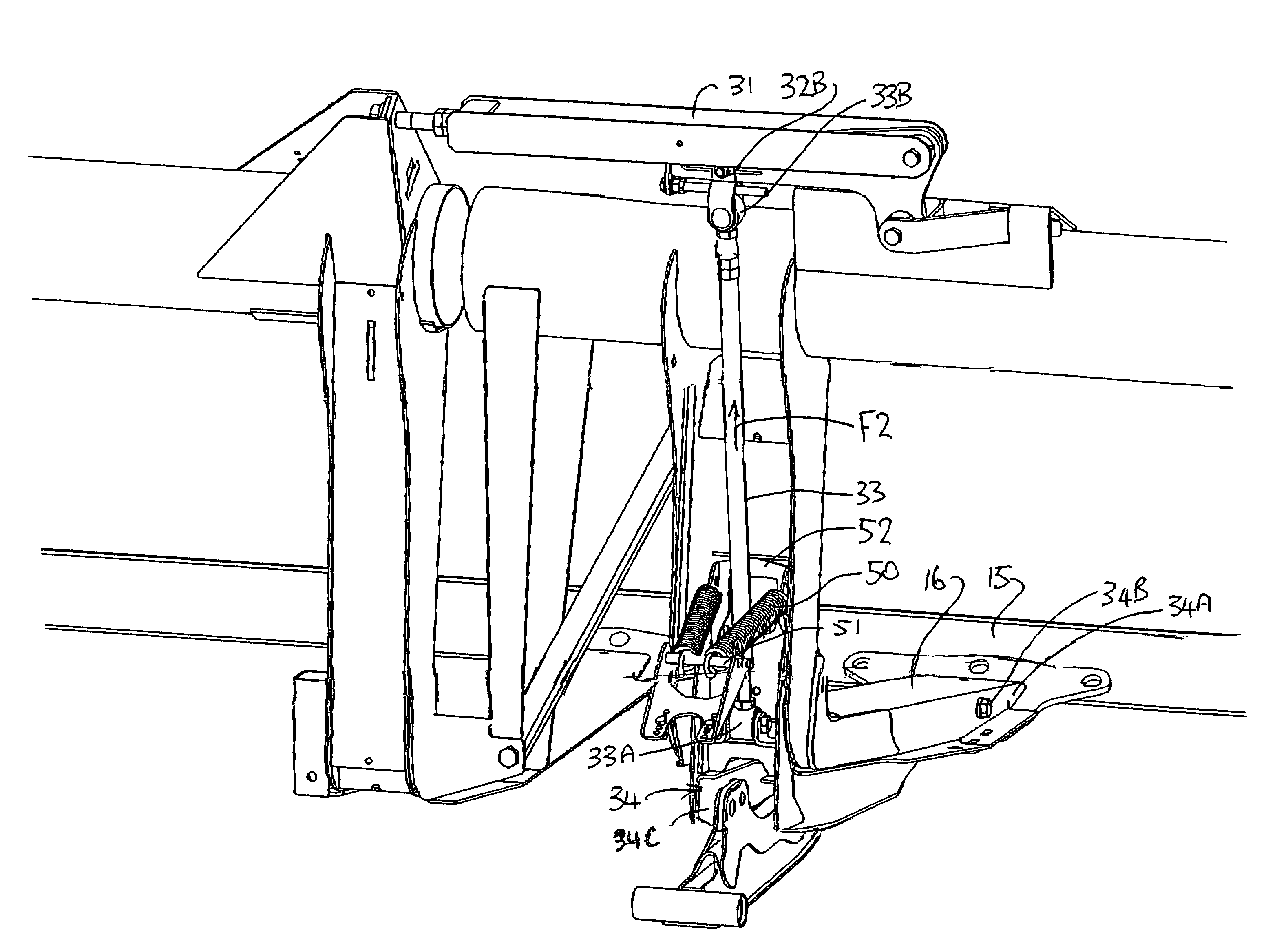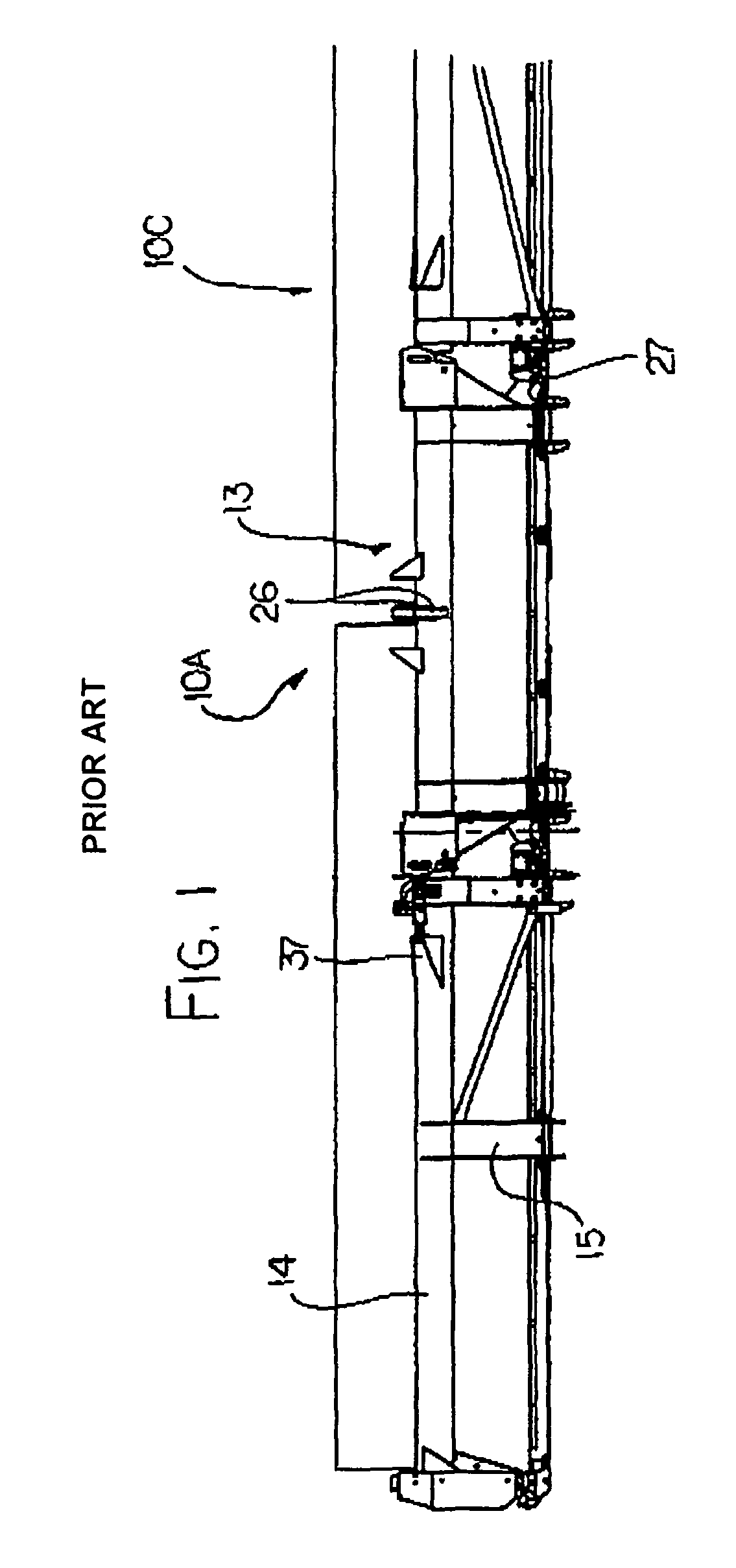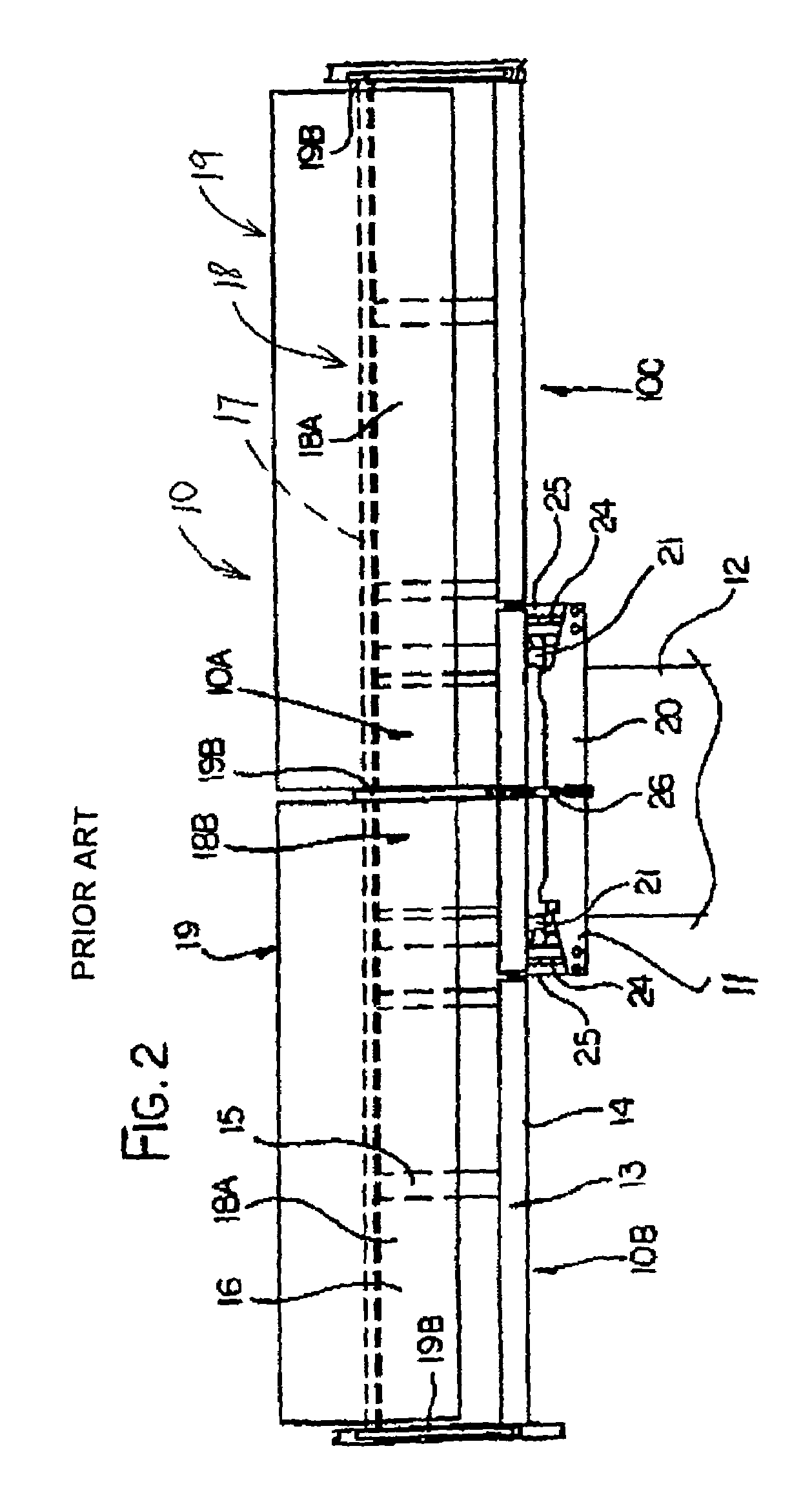Device for maintaining wing balance on a multi-section header
a multi-section header and wing balance technology, which is applied in the direction of mowers, harrows, etc., can solve the problems of not being able to optimize the co-operation between the cutter bar and the reel, the design requires a significantly reduced cutting speed, and the cutter bar is no longer able to maintain a close tolerance between the bats or fingers and the cutter bar, so as to achieve the flexibility of the cutter bar and simple construction
- Summary
- Abstract
- Description
- Claims
- Application Information
AI Technical Summary
Benefits of technology
Problems solved by technology
Method used
Image
Examples
Embodiment Construction
[0153]Reference is made to U.S. Pat. No. 6,865,871 (Patterson) issued Mar. 15, 2005 which disclose details of an adapter for mounting a header on a combine harvester, the disclosure of which is incorporated herein by reference.
[0154]Reference is also made to U.S. Pat. No. 6,675,568 (Patterson) issued Jan. 13, 2004 which disclose details of a flexible header of the general type with which the present invention is concerned, the disclosure of which is incorporated herein by reference. FIGS. 1 and 2 and part of the following description are taken from that Patent for the convenience of the reader. Further details not included herein can be obtained by reference to that patent.
[0155]FIGS. 1 and 2 show in rear elevational view and in plan view respectively a header 10 carried on an adapter 11 or mounting assembly attached to the feeder house 12 of a combine harvester. In FIG. 1 the adapter is omitted for convenience of illustration.
[0156]The header 10 includes a frame 13 defined by a mai...
PUM
 Login to View More
Login to View More Abstract
Description
Claims
Application Information
 Login to View More
Login to View More - R&D
- Intellectual Property
- Life Sciences
- Materials
- Tech Scout
- Unparalleled Data Quality
- Higher Quality Content
- 60% Fewer Hallucinations
Browse by: Latest US Patents, China's latest patents, Technical Efficacy Thesaurus, Application Domain, Technology Topic, Popular Technical Reports.
© 2025 PatSnap. All rights reserved.Legal|Privacy policy|Modern Slavery Act Transparency Statement|Sitemap|About US| Contact US: help@patsnap.com



